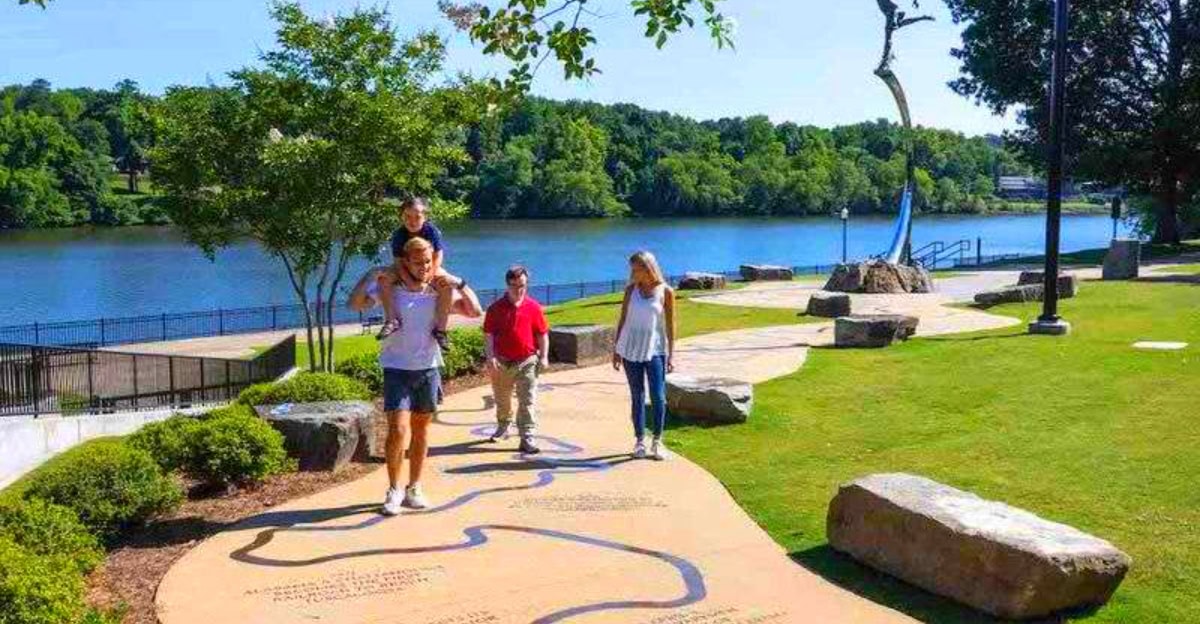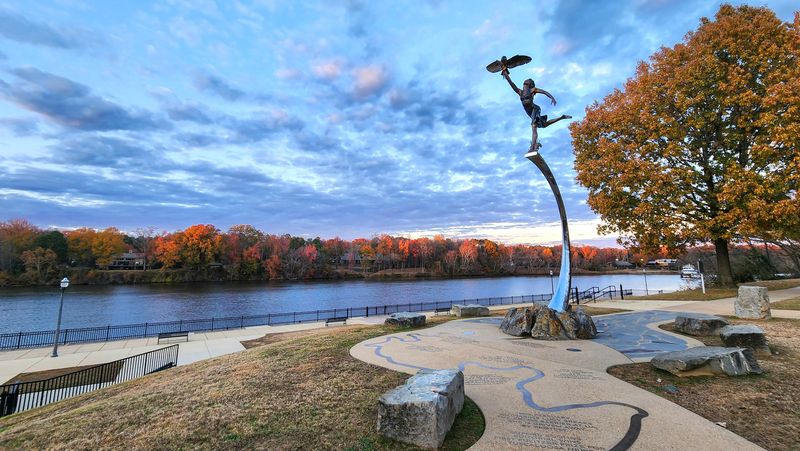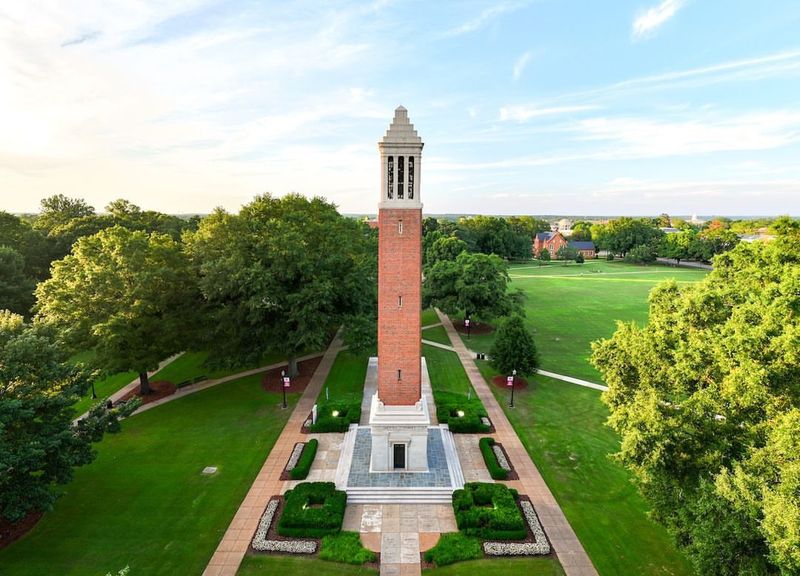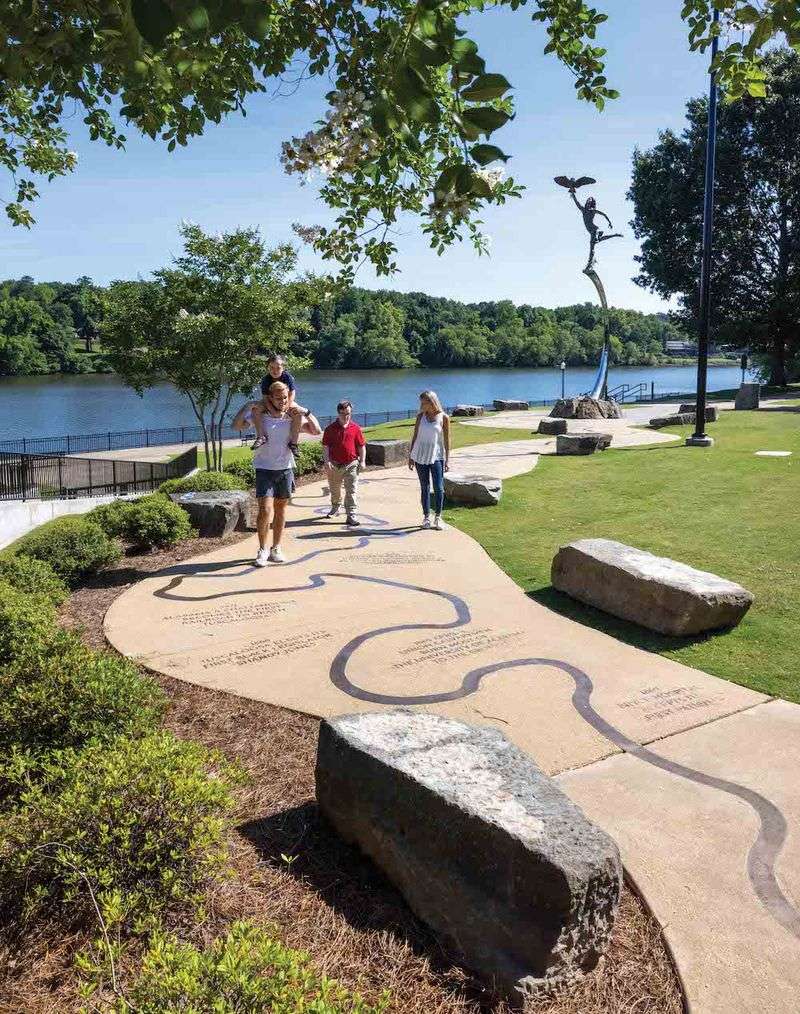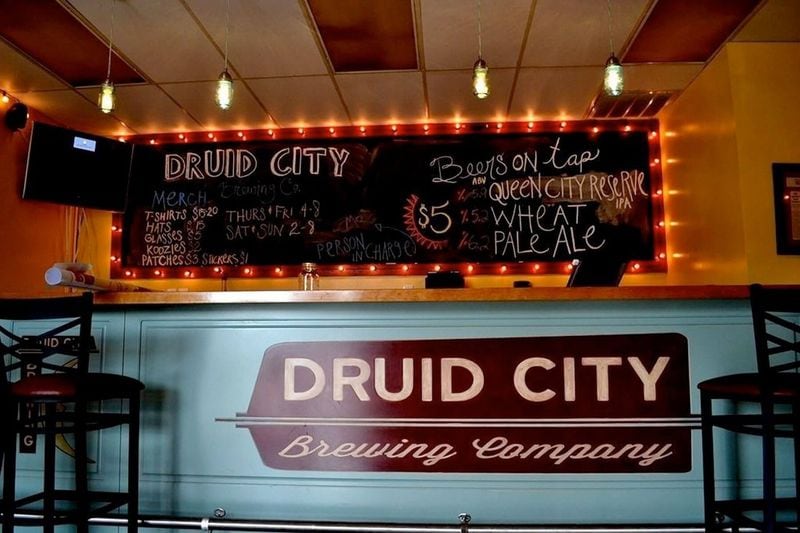Tuscaloosa, Alabama’s beloved “Druid City,” offers visitors an amazing mix of college excitement, beautiful riverfront views, and deep Southern history. Named for its majestic oak trees that line downtown streets, this charming city has been home to the University of Alabama since 1831. Whether you’re cheering for the Crimson Tide, exploring historic landmarks, or enjoying craft beer by the Black Warrior River, Tuscaloosa delivers unforgettable experiences that showcase the best of Alabama hospitality.
1. Discover Why They Call It the Druid City
Water oak trees have defined Tuscaloosa’s identity since the 1840s when city planners began planting these majestic giants throughout downtown. Originally nicknamed “The Oak City,” residents eventually adopted “Druid City” because ancient Druids considered oak trees sacred.
Walking through downtown today feels like strolling through a natural cathedral. These towering oaks create shaded canopies over sidewalks and parks, making summer exploration comfortable and beautiful.
Many of the original trees still stand strong, some reaching heights of 80 feet or more. Photography enthusiasts love capturing these natural monuments, especially during golden hour when sunlight filters through their branches.
2. Experience University of Alabama’s Electric Campus Energy
Since 1831, the University of Alabama has pumped youthful energy into Tuscaloosa’s veins. With about 35% of the population aged 15-25, the city buzzes with student life and Crimson Tide pride year-round.
Bryant-Denny Stadium dominates the landscape, hosting over 100,000 fans on game days. The iconic Denny Chimes bell tower serves as campus heartbeat, while the Alabama Museum of Natural History showcases fascinating exhibits.
Campus tours reveal stunning architecture mixing historic charm with modern facilities. The Quad provides perfect picnic spots, and Coleman Coliseum hosts exciting basketball games. Paul W. Bryant Museum celebrates legendary coaching history that makes Alabama football a religion here.
3. Stroll the Scenic Black Warrior River Walk
The 4.5-mile paved Tuscaloosa River Walk transforms your visit into a peaceful riverside adventure. Following the Black Warrior River’s gentle curves, this trail connects downtown to the bustling Tuscaloosa River Market.
Saturday mornings bring the farmers market alive with local produce, handmade crafts, and live music. Families spread blankets for riverside picnics while joggers and cyclists enjoy the smooth pathway.
The Tuscaloosa Amphitheater hosts outdoor concerts with river views as backdrop. Benches positioned along the route offer perfect spots for watching boats navigate the water. Sunset walks here create magical moments as the sky reflects off the river’s surface.
4. Step Back in Time at Historic Capitol Park
Alabama’s political heart once beat in Tuscaloosa from 1826 to 1846, and Capitol Park preserves fascinating ruins of the former state capitol building. These weathered brick foundations tell stories of early Alabama governance and Southern politics.
The nearby Old Tavern Museum, built in 1827, transports visitors to 19th-century life with period furnishings and artifacts. Battle-Friedman House showcases elegant Greek Revival architecture, while Jemison-Van de Graaff Mansion displays Victorian grandeur.
Guided tours reveal secrets of wealthy merchants, political intrigue, and daily life in frontier Alabama. Each building represents different architectural periods, creating an outdoor history lesson that brings textbooks to life through authentic preservation efforts.
5. Immerse Yourself in Crimson Tide Traditions
Roll Tide isn’t just a saying here – it’s a way of life that defines Tuscaloosa’s cultural identity. Game days transform the entire city into a sea of crimson and white, with over 100,000 fans creating electric atmospheres.
Bryant-Denny Stadium’s roar can be heard for miles, while tailgating traditions begin days before kickoff. The Paul W. Bryant Museum honors Coach Bear Bryant’s legendary legacy with trophies, memorabilia, and interactive exhibits.
Even during off-season, campus tours reveal championship banners, historic photos, and stories of legendary players. Local restaurants display signed jerseys and game photos, making every meal a celebration of Alabama football excellence and tradition.
6. Savor Local Craft Beer at Druid City Brewing
Druid City Brewing Company opened in 2012 as Tuscaloosa’s pioneering craft brewery, paying perfect homage to the city’s oak-lined heritage. This local success story helped launch Alabama’s craft beer renaissance with creative brews and community spirit.
Their taproom welcomes visitors with rotating seasonal ales, hoppy IPAs, and smooth stouts. The brewery’s name celebrates those sacred oaks that earned Tuscaloosa its nickname, creating full-circle storytelling through every sip.
Food trucks often park outside, creating perfect beer-and-bite combinations. Live music events and trivia nights build community connections, while brewery tours explain the brewing process. Local ingredients and Alabama pride flavor every batch, making each visit a taste of authentic Tuscaloosa culture.
7. Explore Tuscaloosa’s Resilient Historical Legacy
Founded in 1819 and named after Chief Tuskaloosa, a powerful Muskogean leader who confronted Spanish explorer Hernando de Soto, Tuscaloosa carries centuries of compelling stories. Serving as Alabama’s capital from 1826-1846 established its political importance.
The city survived Civil War fires, economic challenges, and devastating natural disasters, including the catastrophic 2011 tornado that destroyed entire neighborhoods. Yet Tuscaloosa rebuilt stronger, preserving historic treasures while embracing modern growth.
Walking downtown reveals this resilience through restored buildings standing beside new construction. Museums, monuments, and preserved sites honor both Native American heritage and Southern history, creating educational opportunities that help visitors understand Alabama’s complex, fascinating past.
